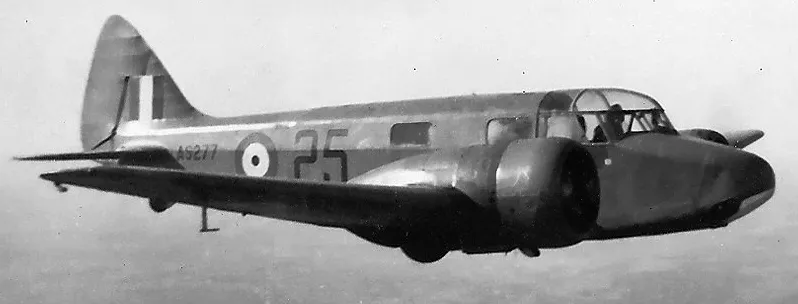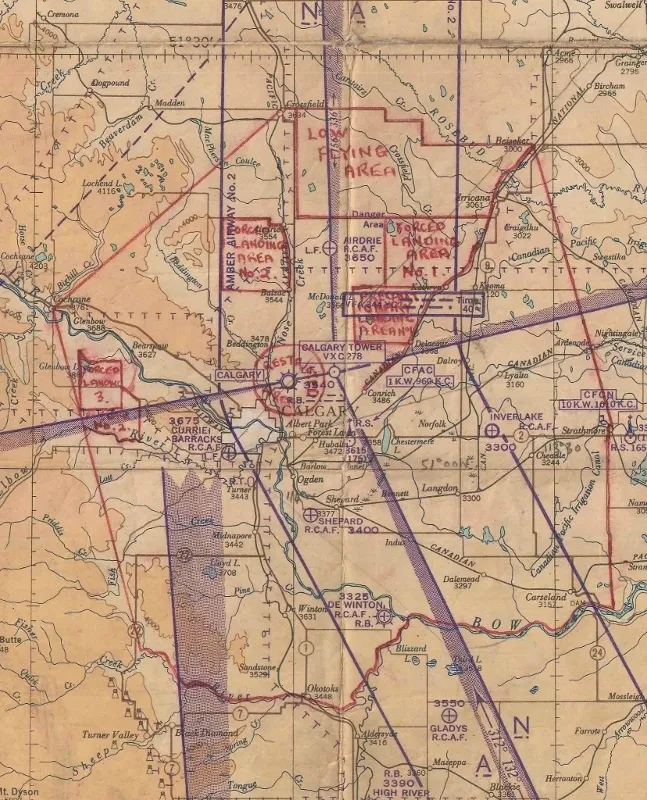Webb, William Edward (Leading Aircraftman)
Killed in Flying Accident 1942-August-14


Birth Date: 1925-March-22
Born:
Parents: Mrs. E. E. O'Connor, of Northfleet, Kent, England.
Spouse:
Home:
Enlistment:
Enlistment Date: unkown date
Service
RAFVR
Unit
37 SFTS- Service Flying Training School (RAF)
Base
Calgary, Alberta, Canada
Rank
Leading Aircraftman
Position
Service Numbers
1331223
This incident involved multiple aircraft:
- Oxford Mk. II Serial: BM810
- Oxford Mk. I Serial: AS666
All the above aircraft in the above list are referenced in this report.
Crew or Other Personnel
Oxford BM810
Oxford serial: BM810

Airspeed A.S. 10 Oxford Mk. II, RCAF (Serial No. AS277), 25, in flight over Saskatchewan, 1942.
The Airspeed AS.10 Oxford was a twin-engine monoplane aircraft developed and manufactured by Airspeed. It saw widespread use for training British Commonwealth aircrews in navigation, radio-operating, bombing and gunnery roles throughout the Second World War.
The Oxford was developed by Airspeed during the 1930s in response to a requirement for a capable trainer aircraft that conformed with Specification T.23/36, which had been issued by the British Air Ministry. Its basic design is derived from the company's earlier AS.6 Envoy, a commercial passenger aircraft. Performing its maiden flight on 19 June 1937, it was quickly put into production as part of a rapid expansion of the Royal Air Force (RAF) in anticipation of a large-scale conflict.
As a consequence of the outbreak of war, many thousands of Oxfords were ordered by Britain and its allies, including Australia, Canada, France, New Zealand, Poland, and the United States. Following the end of the conflict, the Oxford continued to achieve export sales for some time, equipping the newly formed air forces of Egypt, India, Israel, and Yugoslavia. It was considered to be a capable trainer aircraft throughout the conflict, as well as being used a general-purpose type. A large number of Oxfords have been preserved on static display. Wikipedia
Aircraft Images
Oxford BM810
Oxford Mk. II BM810
Category A crash on 14 August 1942, while with No. 37 Service Flying Training School at Calgary, Alberta.1942-04-10 Taken on Strength 2019-08-20
1942-August-14 Accident: 37 Service Flying Training School Loc: Calgary Names: Nimmo | Webb
1942-11-28 Struck off Strength 2019-08-20
Oxford AS666
Oxford Mk. I AS666
Taken on strength at No. 2 Elementary Flying Training School at Fort William, Ontario. To No. 4 Training Command on 16 October 1941, for use by No. 37 Service Flying Training School at Calgary, Alberta. Winter conversion set installed at No. 37 SFTS by 30 April 1942. Still with No. 37 Service Flying Training School when it suffered a Category A crash on 14 August 1942. Collided with Oxford BM810 just east of Calgary, near Conrich, during practice formation flying, then appeared to suffer structural failure in flight. Leading Aircraftman L.R. Nimmo, RAF, was found dead very close to the wreckage, his parachute partially opened. The Board of Enquiry could not determine if he actually attempted to jump, or if he was thrown out of the wreckage on impact. Scrapped by No. 10 Repair Depot.1941-09-17 Taken on Strength No. 2 Training Command 2019-08-20
1942-July-29 Accident: 37 Service Flying Training School Loc: Aerodrome Names: Rambridge
1942-August-14 Accident: 37 Service Flying Training School Loc: Calgary Names: Nimmo | Webb
1943-03-12 Struck off Strength Struck off, reduced to spares and produce 2019-08-20
Unit Desciption
37 SFTS (37 Service Flying Training School)
Graduates of the EFTS "learn-to-fly" program went on a Service Flying Training School (SFTS) for 16 weeks. For the first 8 weeks the trainee was part of an intermediate training squadron; for the next 6 weeks an advanced training squadron and for the final 2 weeks training was conducted at a Bombing & Gunnery School. The Service schools were military establishments run by the RCAF or the RAF.
There were two different types of Service Flying Training Schools. Trainees in the fighter pilot stream went to an SFTS like No. 14 Aylmer, where they trained in the North American Harvard or North American Yale. Trainees in the bomber, coastal or transport pilot stream went to an SFTS like No. 5 Brantford where they learned multi-engine technique in an Airspeed Oxford, Avro Anson or Cessna Crane.

Noteable RAF Instructor pilots based at No. 37 SFTS during the war, was F/O Peter Middleton, the grandfather of Catherine Middleton who is now the Duchess of Cambridge and the wife of Prince William.
For More Information on RCAF Station Calgary see here
RCAF.Info - RCAF Station Calgary AB
RCAF.Info - Relief Landing Field Airdrie AB
RCAF.Info - Relief Landing Field Inverlake AB
![]() Bomber Command Museum Of Canada - 37 SFTS
Bomber Command Museum Of Canada - 37 SFTS
Calgary Wings SFTS37 History
![]() Clarence Simonsen - Calgary Wings 37 SFTS History.pdf
Clarence Simonsen - Calgary Wings 37 SFTS History.pdf
![]() YouTube - Valour Canada Aerodrome of Democracy
YouTube - Valour Canada Aerodrome of Democracy
![]() YouTube - GHOSTS OF THE FOOTHILLS - The BCATP's Hidden Legacy in Alberta
YouTube - GHOSTS OF THE FOOTHILLS - The BCATP's Hidden Legacy in Alberta